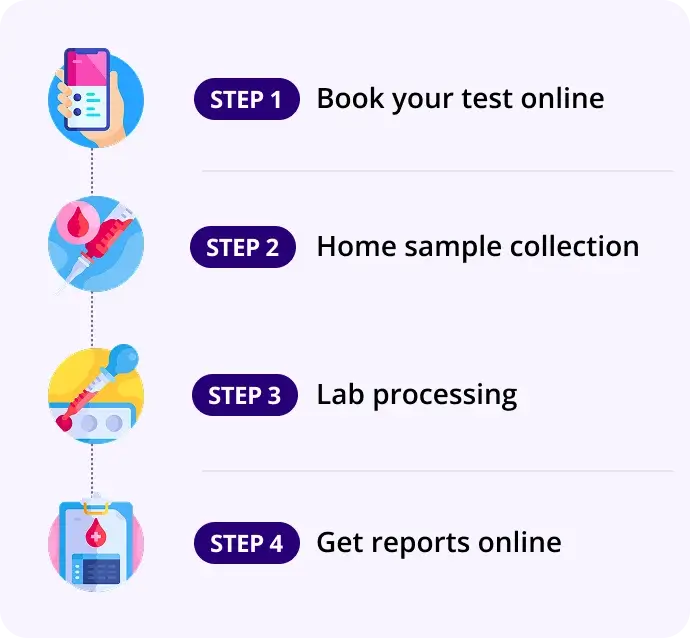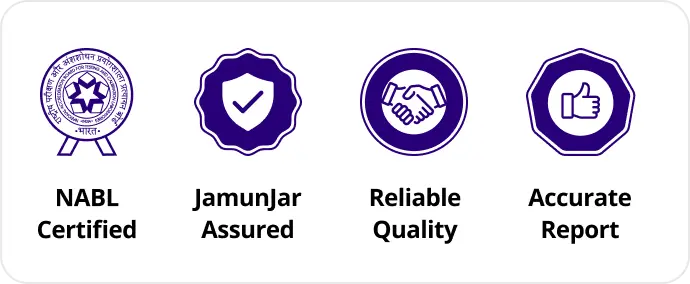Angiotensin Converting Enzyme (ACE)
Report in 16Hrs
At Home
No Fasting Required
Details
Sarcoidosis is an inflammatory disease that leads to granuloma formation, especially in the lungs and lymph nodes. Granulomas release excess ACE, making it a useful biomarker.
₹899₹1452
38% OFF
🧪 Angiotensin-Converting Enzyme (ACE)
Parameter | Details |
|---|---|
Test Name | Angiotensin-Converting Enzyme (ACE) |
Sample Type | Blood (Serum) |
Fasting Required? | ❌ No fasting required |
Normal Range | Varies by lab, typically 8–52 U/L |
Also Known As | Serum ACE, SACE |
🔬 What Is ACE?
ACE is an enzyme primarily produced by cells in the lungs, though also present in the kidneys, brain, and other tissues. It plays a key role in the Renin-Angiotensin-Aldosterone System (RAAS):
- Converts angiotensin I → angiotensin II, a potent vasoconstrictor.
- Helps regulate blood pressure and fluid balance.
🧠 Organs/Glands Involved
Organ/System | Role Related to ACE |
|---|---|
Lungs | Main site of ACE production |
Kidneys | Involved in RAAS regulation |
Vascular system | Target tissue for angiotensin II effects |
🎯 Why Is the ACE Test Ordered?
ACE levels are not typically used to diagnose hypertension, despite its role in blood pressure regulation. The primary use of this test is:
✅ Diagnosis and Monitoring of Sarcoidosis
Sarcoidosis is an inflammatory disease that leads to granuloma formation, especially in the lungs and lymph nodes. Granulomas release excess ACE, making it a useful biomarker.
📋 Other Conditions with Elevated ACE:
Condition | Comments |
|---|---|
Sarcoidosis | Elevated in ~60% of active cases |
Tuberculosis | Granulomatous inflammation can mildly elevate ACE |
Leprosy | Granulomatous infection |
Histoplasmosis | Fungal granulomatous infection |
Gaucher's Disease | Lysosomal storage disorder |
Amyloidosis | May occasionally cause mild elevation |
Hyperthyroidism | Mild elevations possible |
📊 Interpretation of Results
Result | Possible Interpretation |
|---|---|
High ACE | Active sarcoidosis (especially with lung symptoms); other granulomatous diseases |
Normal ACE | Does not rule out sarcoidosis; can be normal in early or inactive disease |
Low ACE | May occur in severe chronic illness, hypothyroidism, or ACE inhibitor use |
❗ ACE levels are not disease-specific and should always be interpreted in the context of clinical findings and imaging.
🧪 Tests Often Done Alongside ACE
Test | Purpose |
|---|---|
Chest X-ray / CT Scan | Evaluate lungs for granulomas in sarcoidosis |
Serum Calcium | Elevated in sarcoidosis |
Serum Vitamin D (1,25-OH) | May be high in sarcoidosis |
Lung Function Tests (PFTs) | Assess impact on respiratory system |
Bronchoalveolar Lavage / Biopsy | Definitive diagnosis of sarcoidosis |
CRP / ESR | Assess general inflammation |
💊 Effect of Medications
- ACE Inhibitors (e.g., enalapril, lisinopril) used for hypertension may reduce ACE levels, making the test unreliable if taken during testing.
✅ Summary Table
Test Name | Angiotensin-Converting Enzyme (ACE) |
|---|---|
Primary Use | Screen and monitor sarcoidosis |
Organs Involved | Lungs, vascular system, kidneys |
High Levels May Indicate | Sarcoidosis, TB, leprosy, histoplasmosis |
Low Levels May Indicate | Use of ACE inhibitors, hypothyroidism |
Paired Tests | Chest imaging, serum calcium, lung biopsy, ESR, CRP |
How our test process works!

